Abstract
1. Two atropine-resistant response-components of nervous origin have been detected in plexus-containing preparations of the longitudinal muscle from the guinea-pig ileum, by alternate field stimulation with equal numbers of pulses at 50 Hz (response A) and at 5 Hz (response B). With trains of ten or more pulses, response A is always larger than B; the ratio of A/B (1·2-21·3) is subject to animal variation.
2. Both responses are abolished by tetrodotoxin and are absent from plexus-free preparations.
3. Neither response is reduced by ganglion-block with (+)-tubocurarine, dimethyltubocurarine or hexamethonium, or by ganglion-paralysing doses of nicotine; the contribution of excited preganglionic endings to these responses is therefore negligible.
4. Neither response is due to a release of histamine, 5-hydroxytryptamine (5-HT) or prostaglandins, since both A and B persist in the presence of mepyramine, methysergide and the prostaglandin-antagonist SC-19220 (1-acetyl-2(8-chloro-10,11-dihydrodibenz [b,f] [1,4]oxazepine-10-carbonyl) hydrazine).
5. The two response-components are affected differentially by a number of drugs.
6. Histamine, 0·1 μg/ml., reduces response A to the level of B; this selective inhibition of the histamine-sensitive component in A is specifically antagonized by nicotine, 1-2·5 × 10-5 g/ml.
7. 5-HT, 0·1 μg/ml., and strychnine, 20-40 μg/ml., also reduce response A to the level of B, but these selective inhibitions are not antagonized by nicotine.
8. Diphenhydramine, 10 μg/ml., produces equality of the two responses by depressing A and potentiating B.
9. The inhibitory effects of the foregoing drugs are not due to catecholamine release, since they persist after α + β adrenoceptor blockade with phentolamine and pronethalol, and after previous reserpinization of the guinea-pigs.
10. In atropinized plexus-containing preparations of the longitudinal muscle from the guinea-pig descending colon, the responses elicited at 50 Hz and at 5 Hz are virtually equal and both appear to be of Type B since they are not inhibited by histamine, 5-HT or strychnine; diphenhydramine produces strong contractions.
Full text
PDF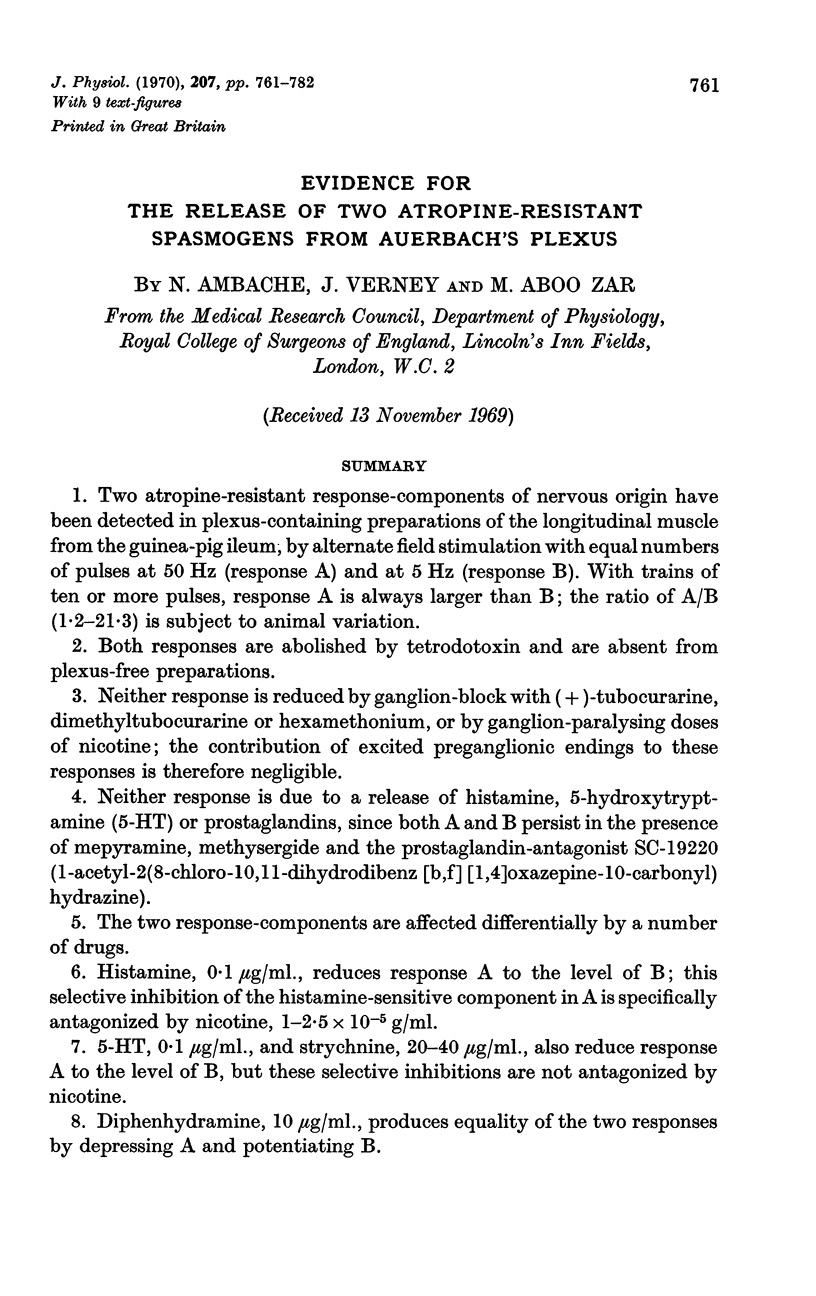
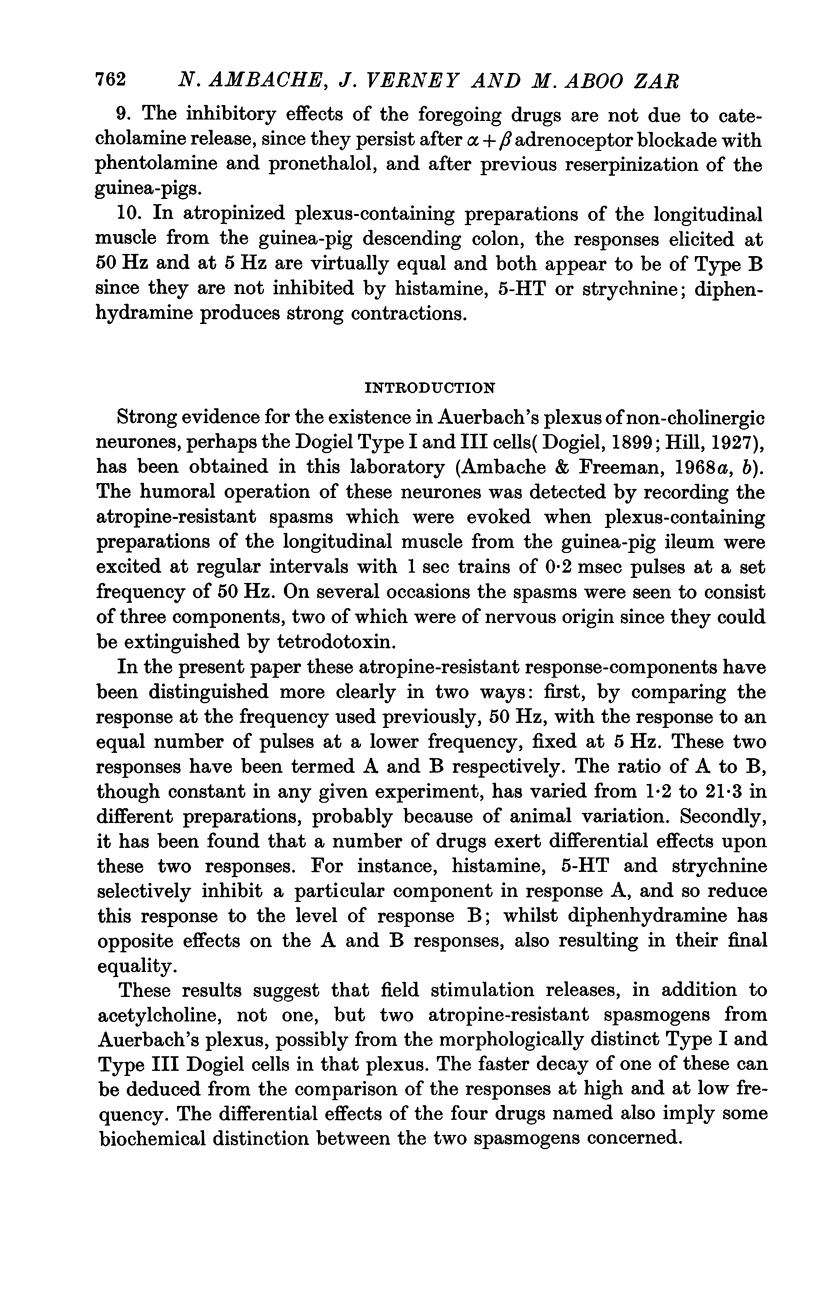
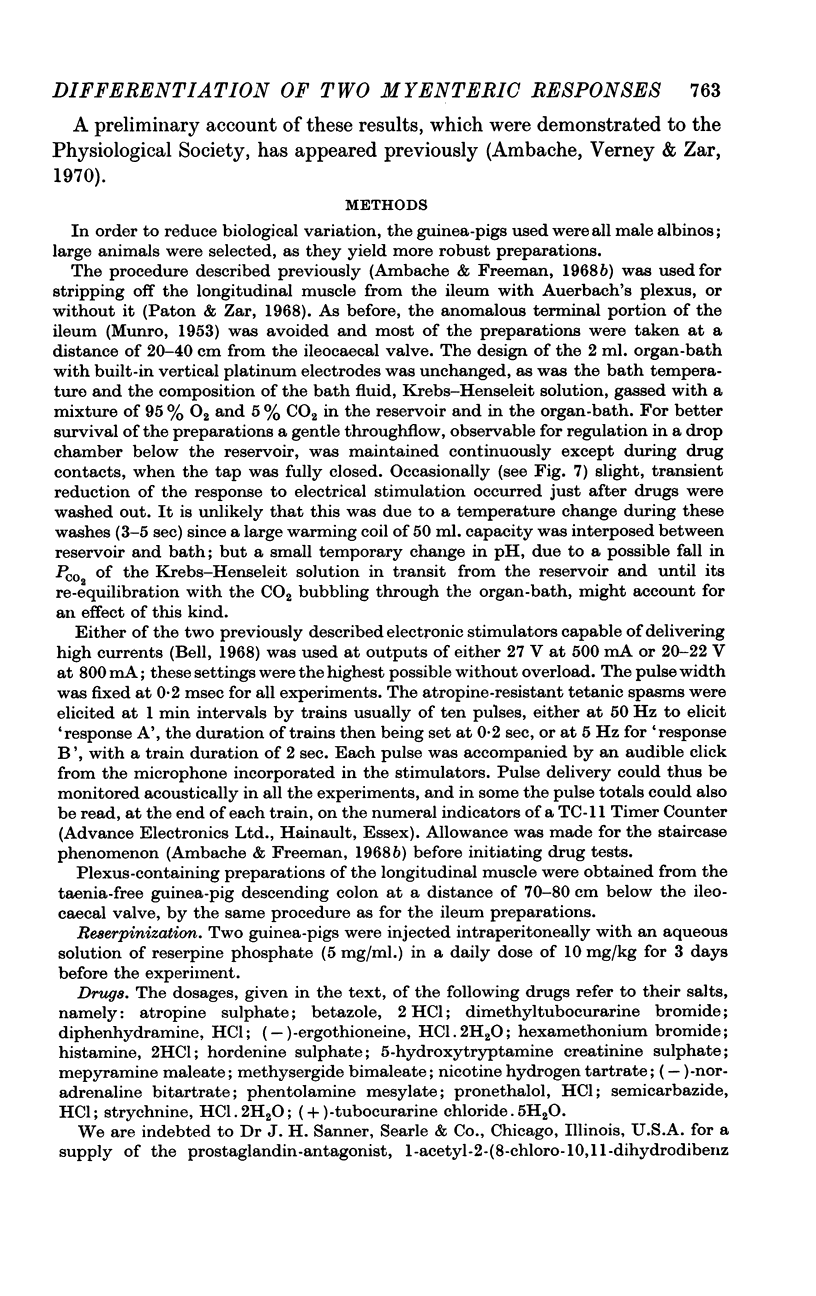
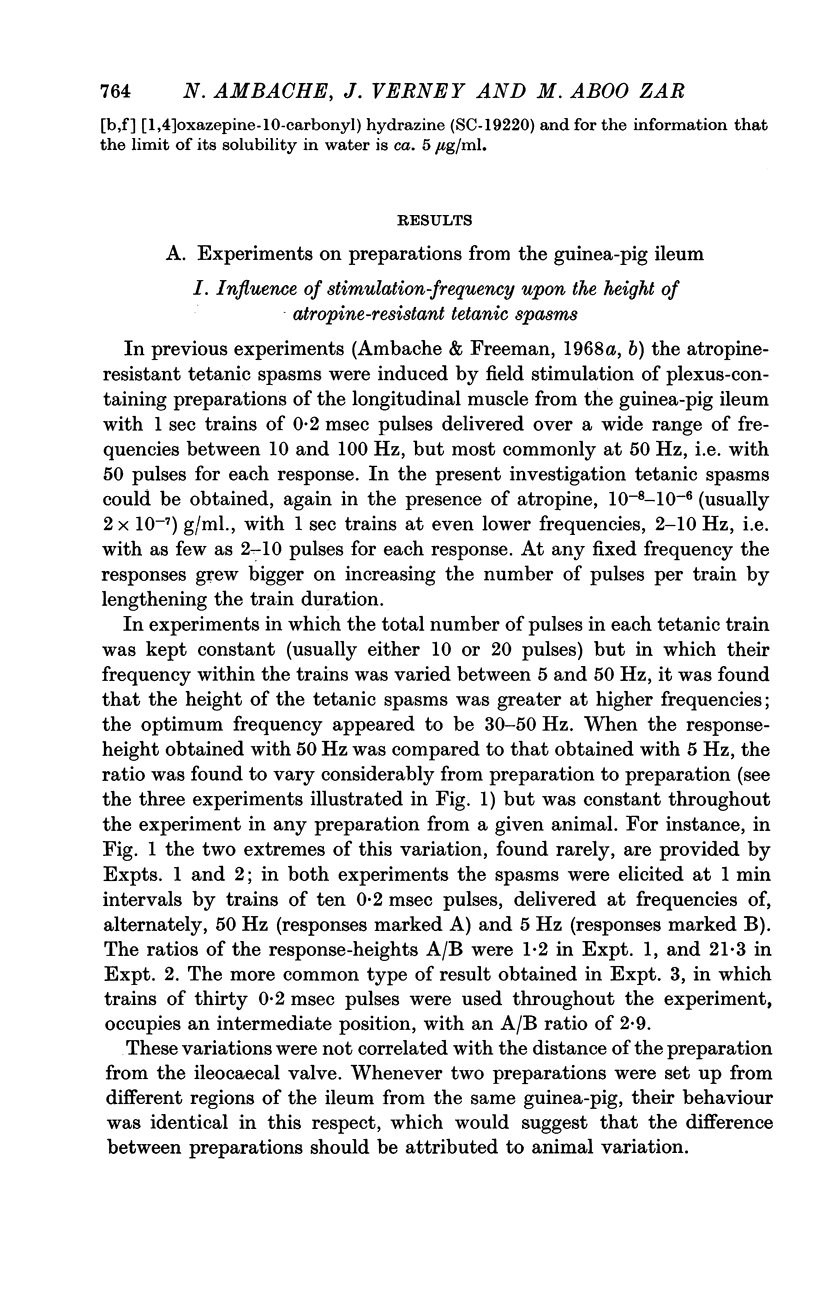


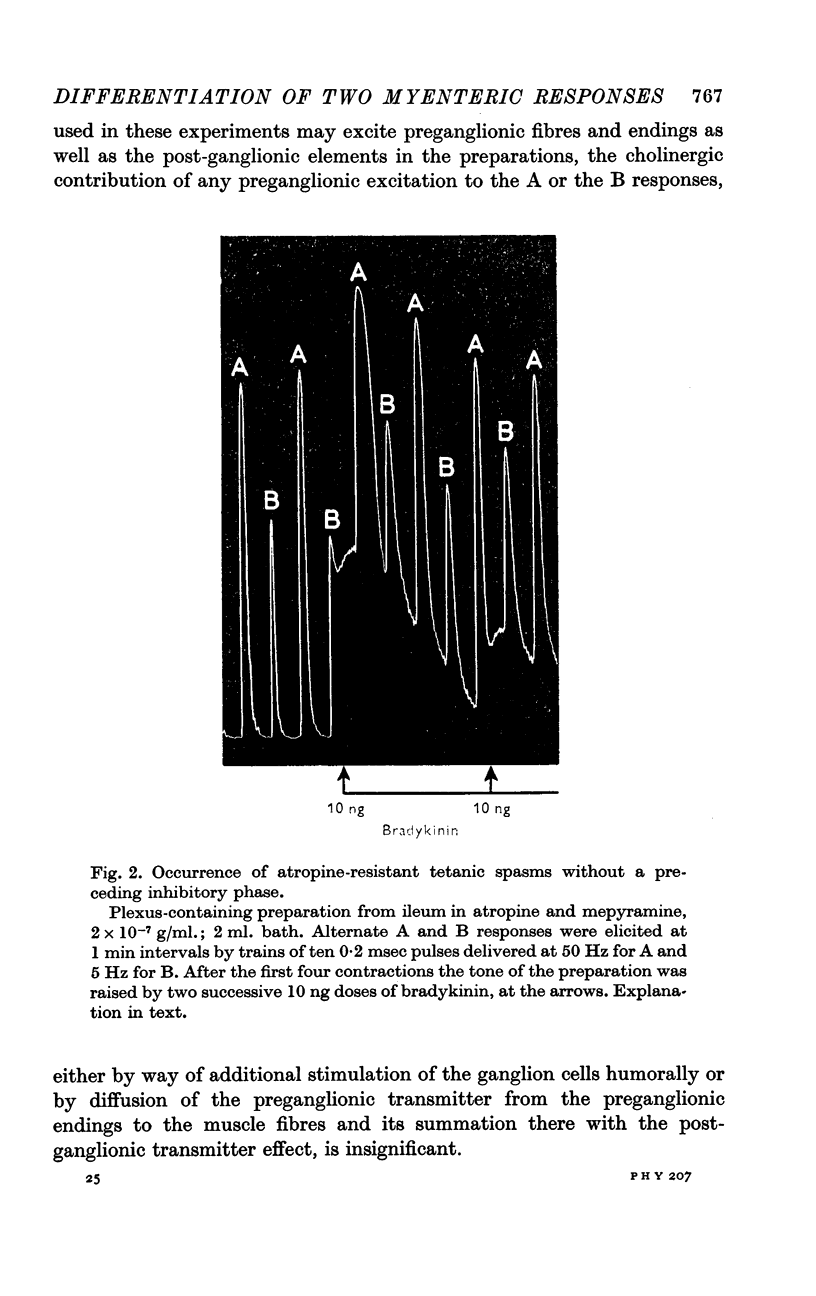
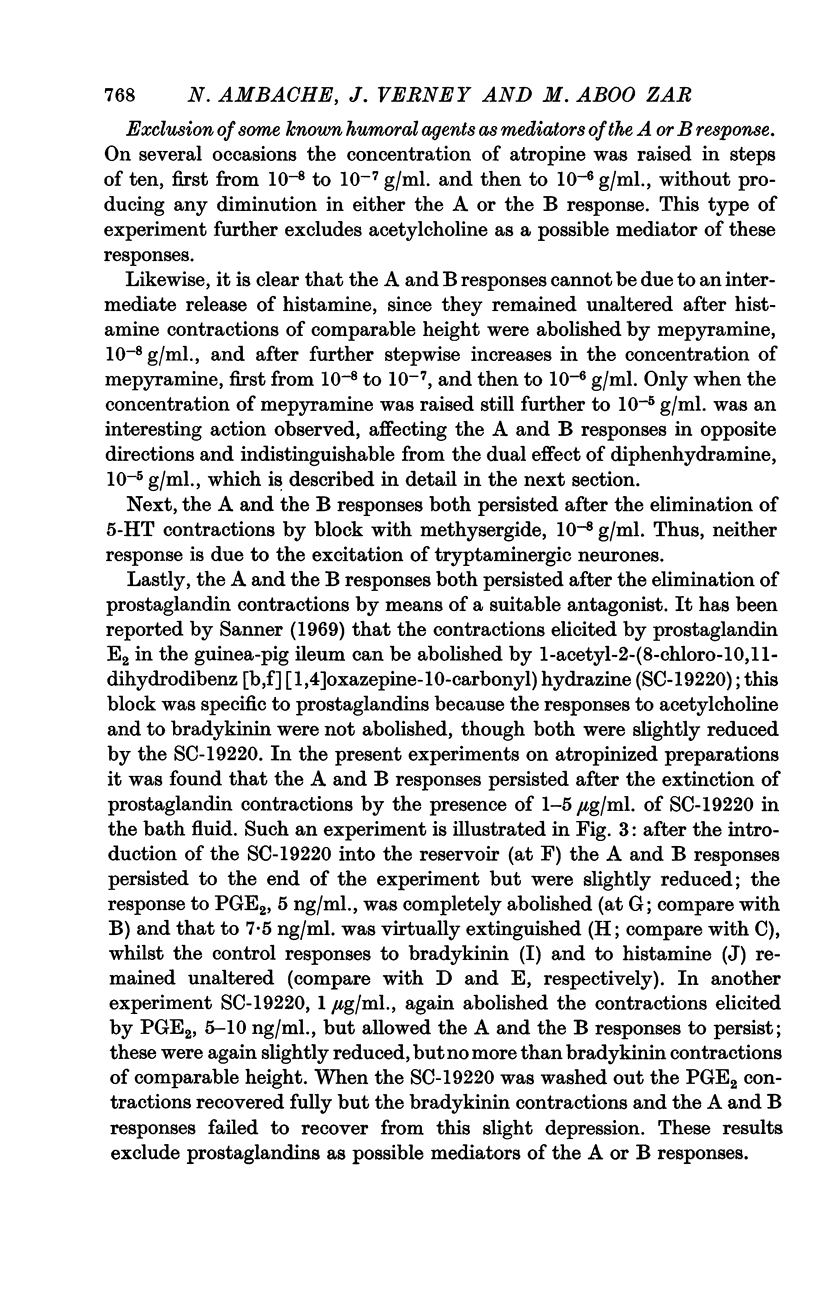
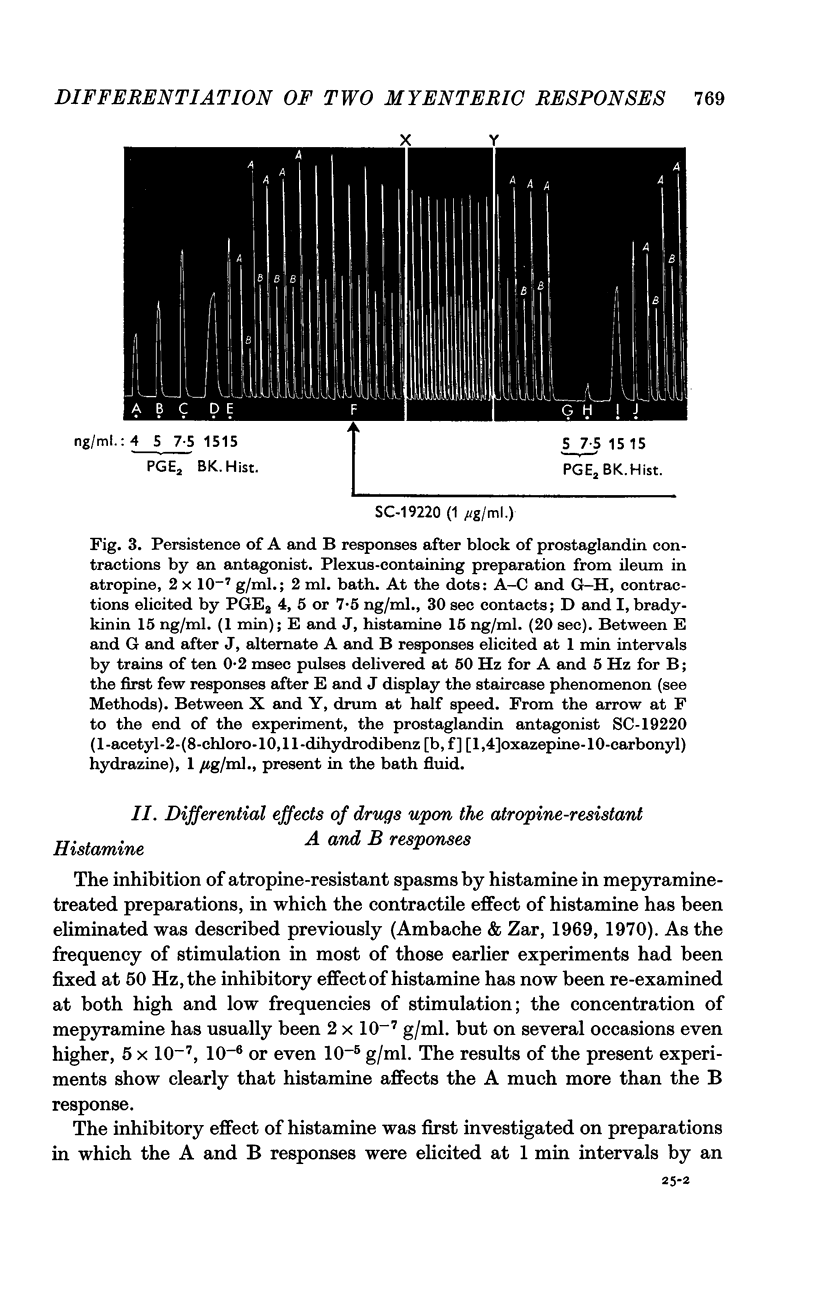





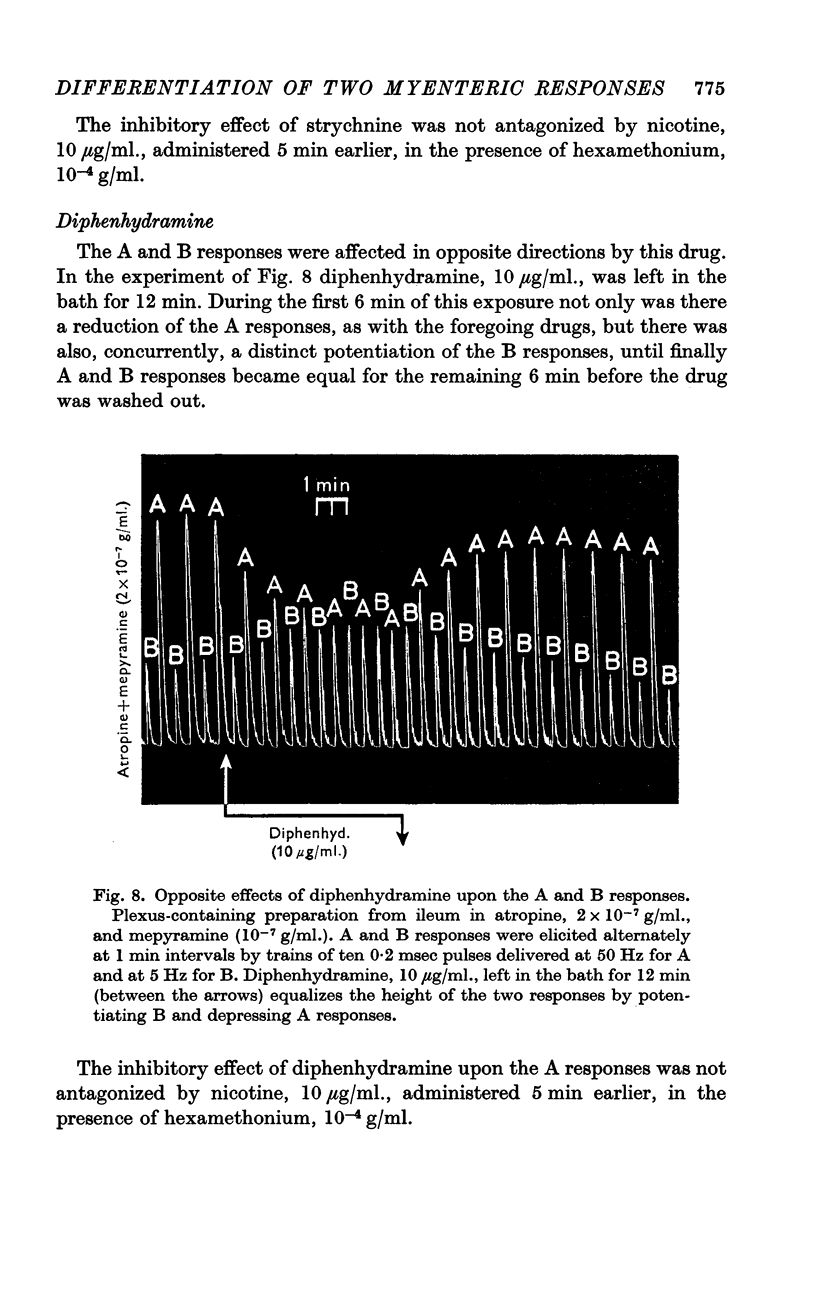
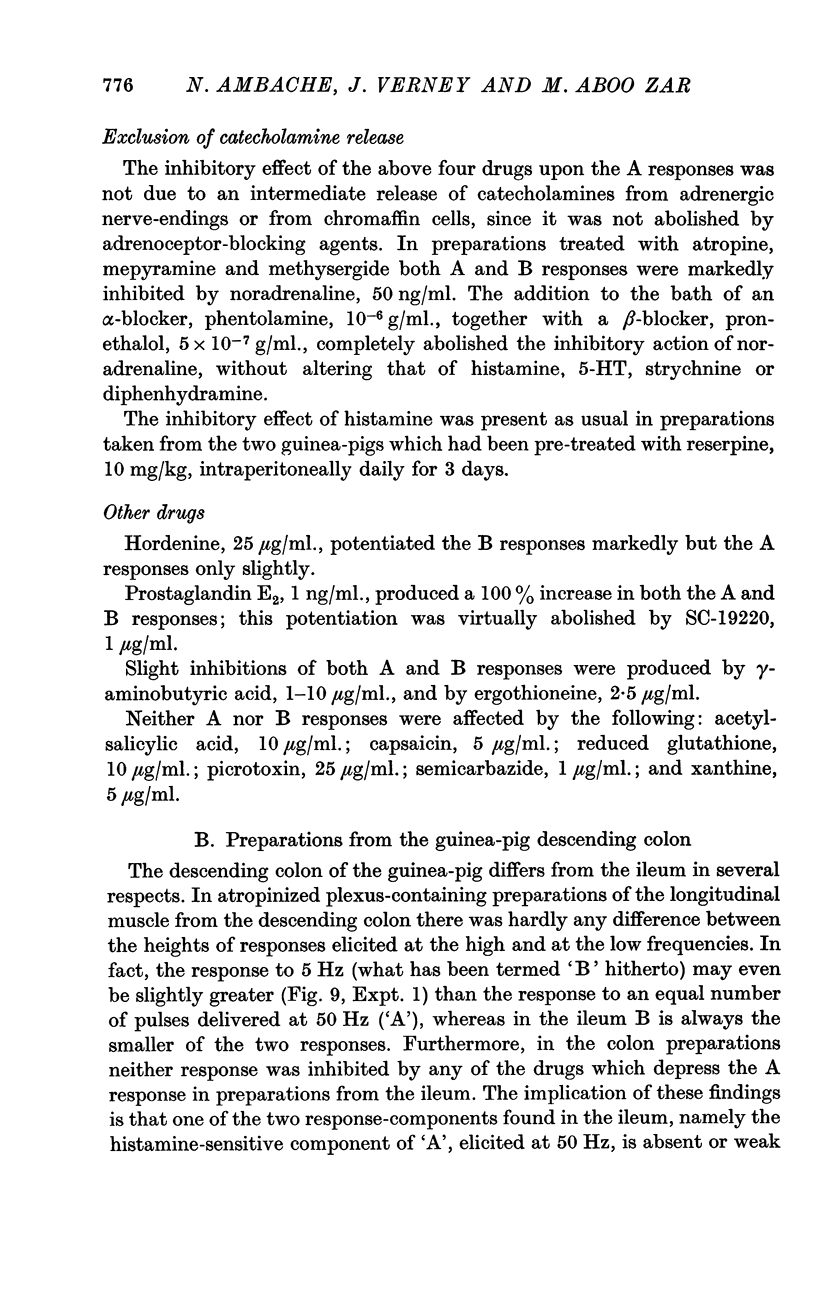


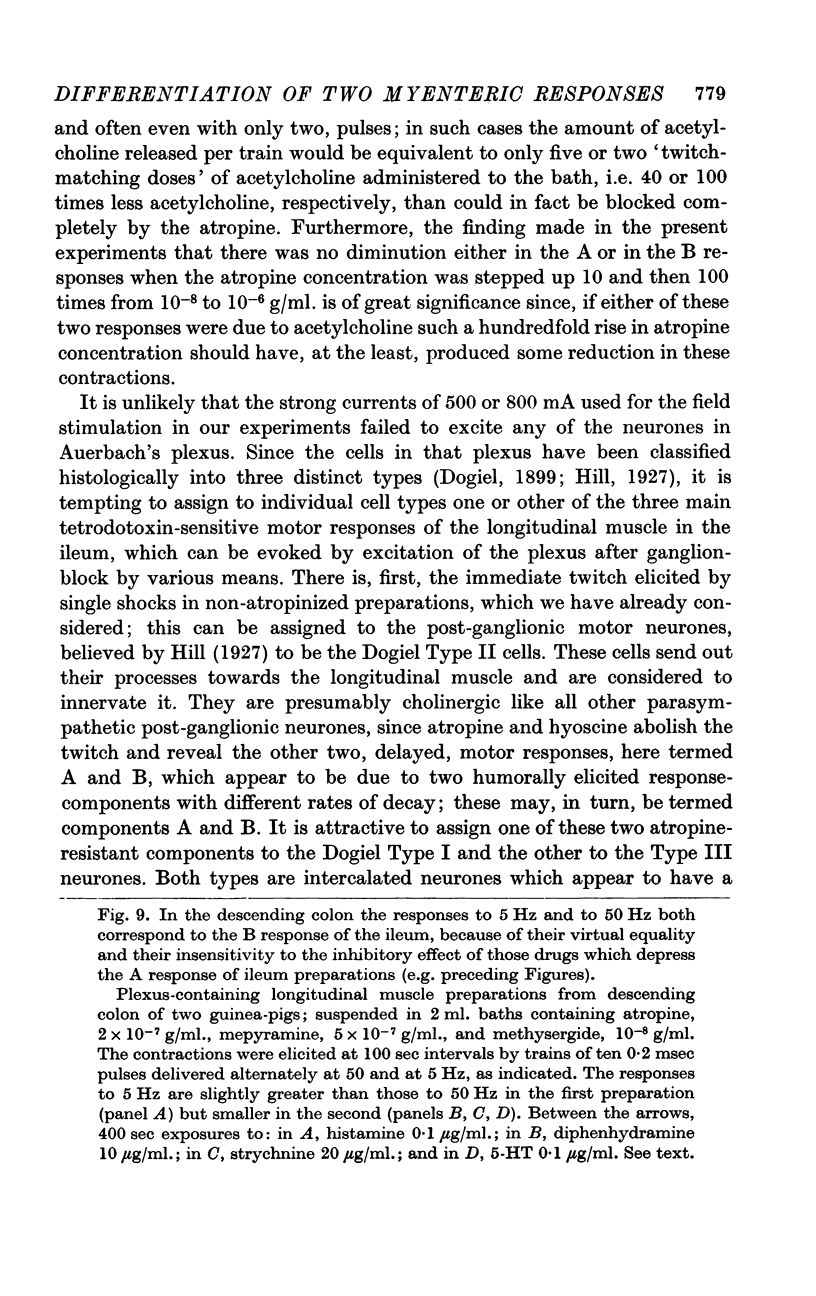
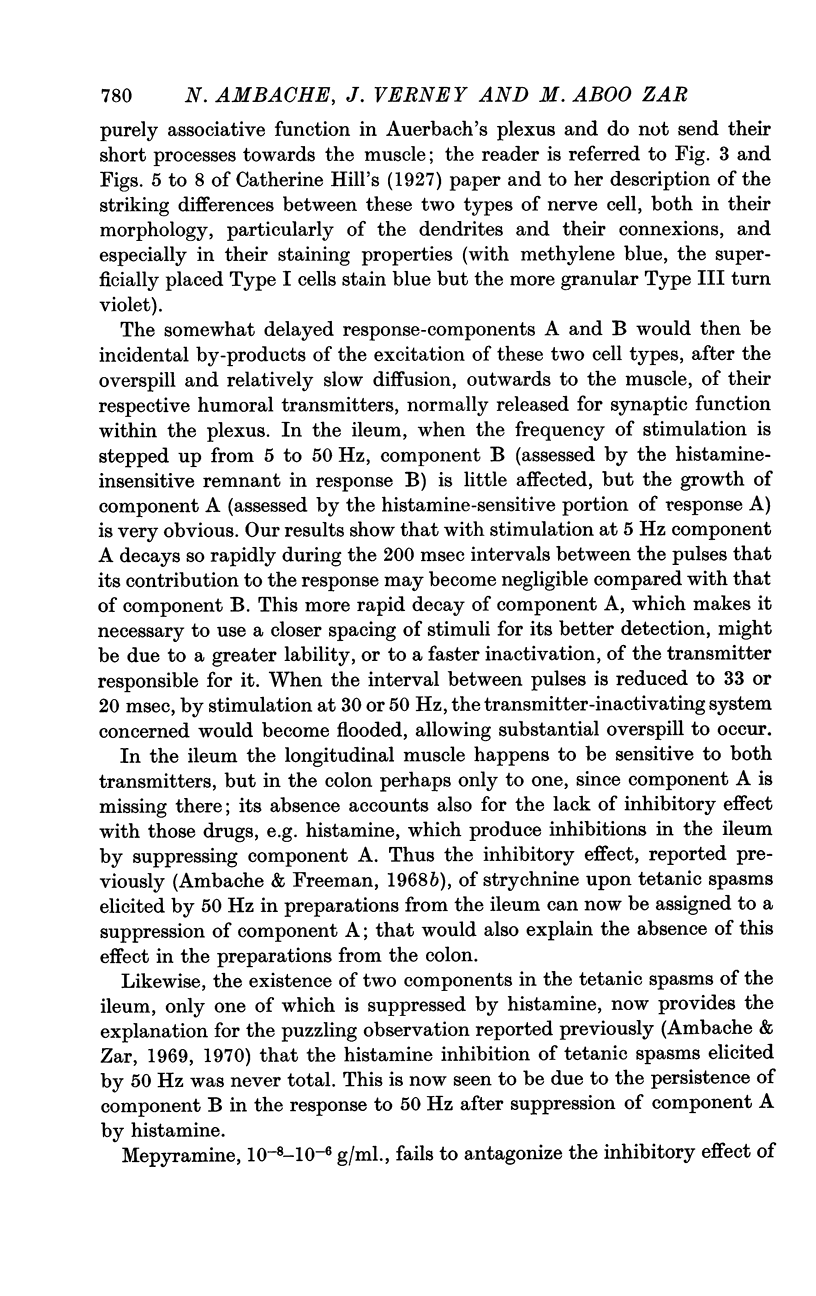
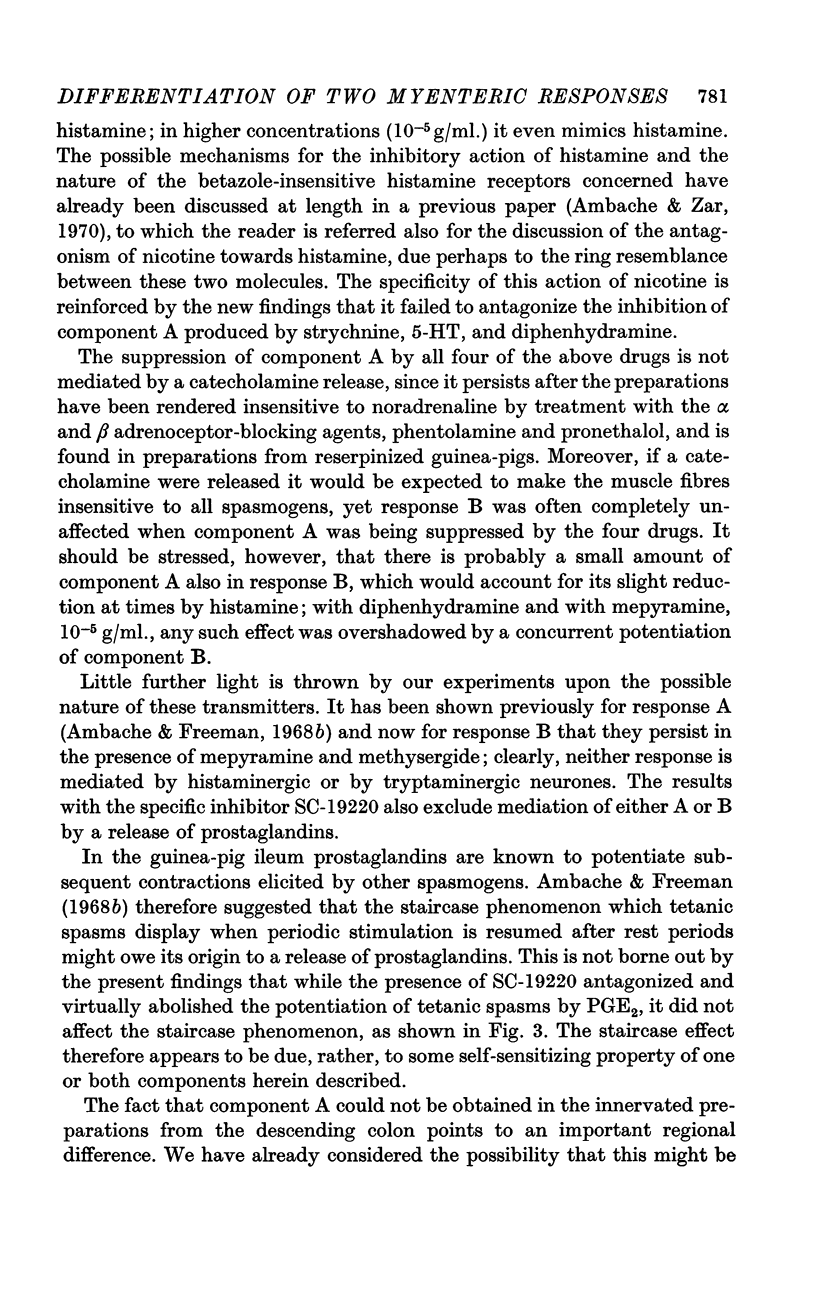
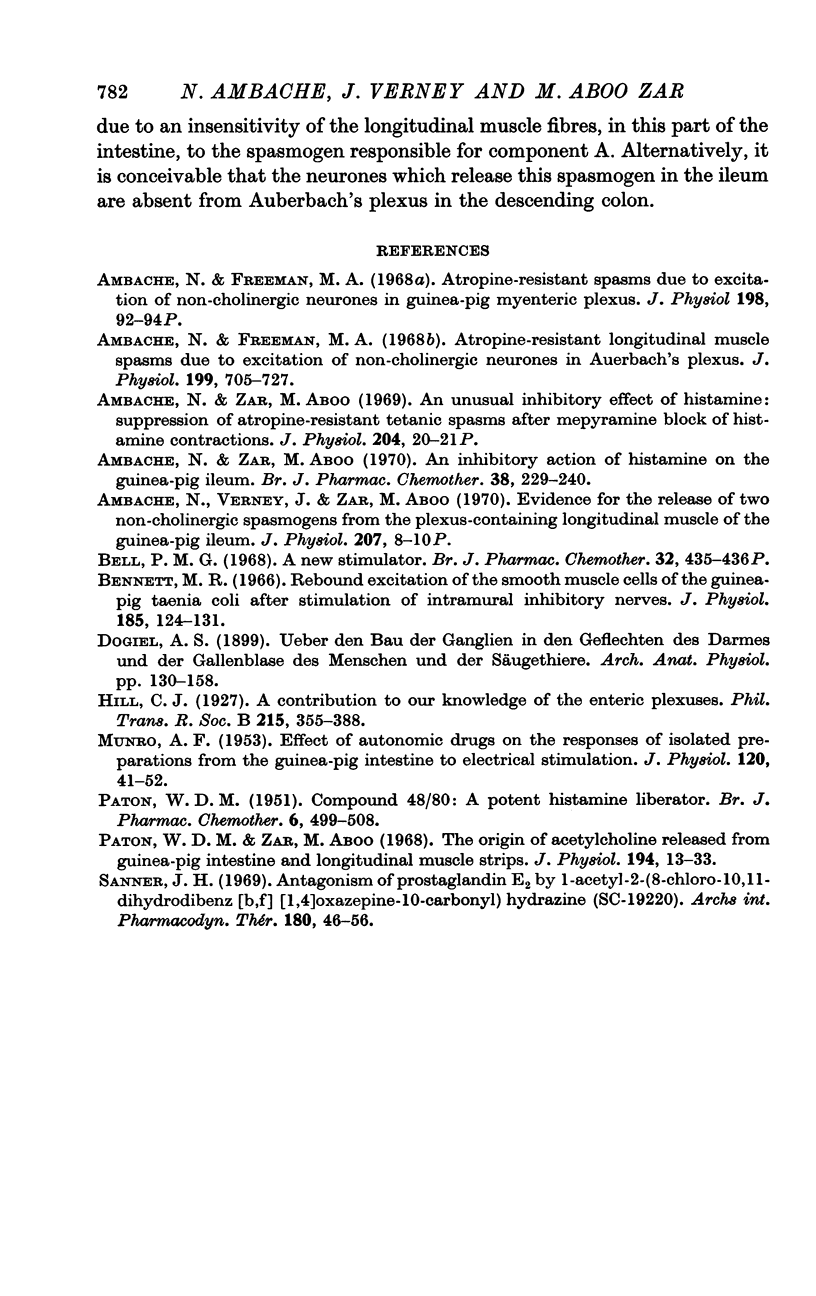
Selected References
These references are in PubMed. This may not be the complete list of references from this article.
- Ambache N., Freeman M. A. Atropine-resistant longitudinal muscle spasms due to excitation of non-cholinergic neurones in Auerbach's plexus. J Physiol. 1968 Dec;199(3):705–727. doi: 10.1113/jphysiol.1968.sp008674. [DOI] [PMC free article] [PubMed] [Google Scholar]
- Ambache N., Zar M. A. An inhibitory action of histamine on the guinea-pig ileum. Br J Pharmacol. 1970 Jan;38(1):229–240. doi: 10.1111/j.1476-5381.1970.tb10352.x. [DOI] [PMC free article] [PubMed] [Google Scholar]
- Bennett M. R. Rebound excitation of the smooth muscle cells of the guinea-pig taenia coli after stimulation of intramural inhibitory nerves. J Physiol. 1966 Jul;185(1):124–131. doi: 10.1113/jphysiol.1966.sp007975. [DOI] [PMC free article] [PubMed] [Google Scholar]
- MUNRO A. F. Effect of autonomic drugs on the responses of isolated preparations from the guinea-pig intestine to electrical stimulation. J Physiol. 1953 Apr 28;120(1-2):41–52. doi: 10.1113/jphysiol.1953.sp004871. [DOI] [PMC free article] [PubMed] [Google Scholar]
- PATON W. D. M. Compound 48/80: a potent histamine liberator. Br J Pharmacol Chemother. 1951 Sep;6(3):499–508. doi: 10.1111/j.1476-5381.1951.tb00661.x. [DOI] [PMC free article] [PubMed] [Google Scholar]
- Paton W. D., Zar M. A. The origin of acetylcholine released from guinea-pig intestine and longitudinal muscle strips. J Physiol. 1968 Jan;194(1):13–33. doi: 10.1113/jphysiol.1968.sp008392. [DOI] [PMC free article] [PubMed] [Google Scholar]
- Sanner J. H. Antagonism of prostaglandin E2 by 1-acetyl-2-(8-chloro-10,11-dihydrodibenz (b,f) (1,4) oxazepine-10-carbonyl) hydrazine (SC-19220). Arch Int Pharmacodyn Ther. 1969 Jul;180(1):46–56. [PubMed] [Google Scholar]


